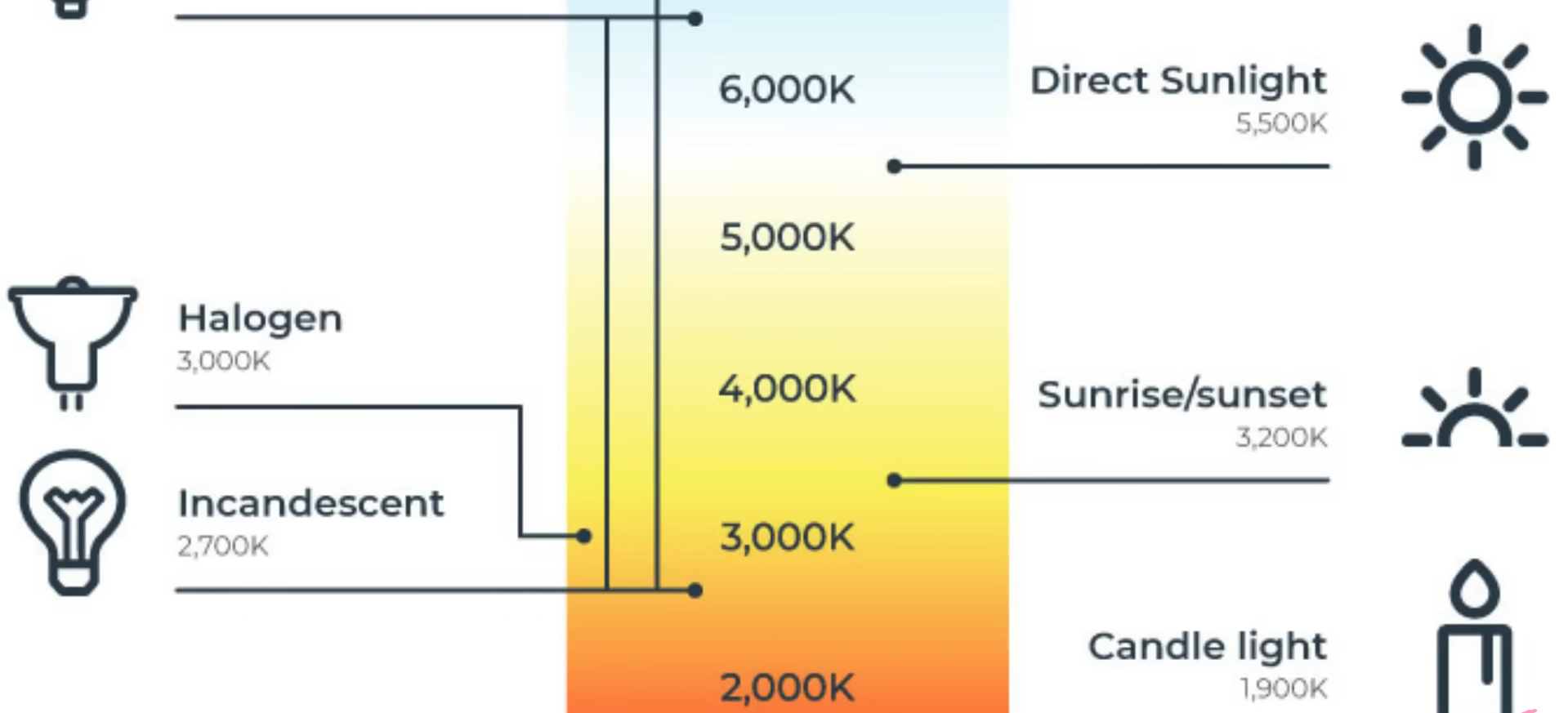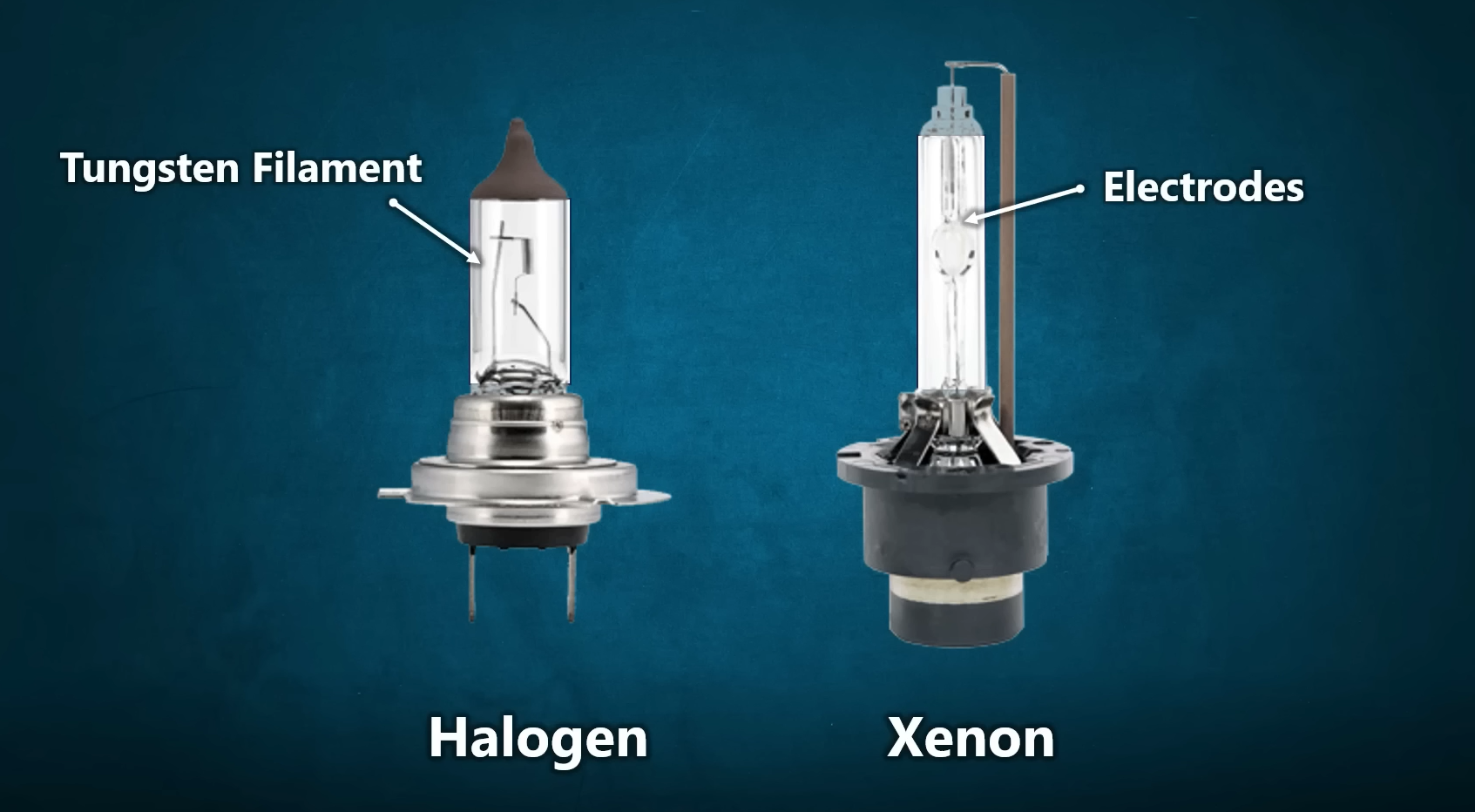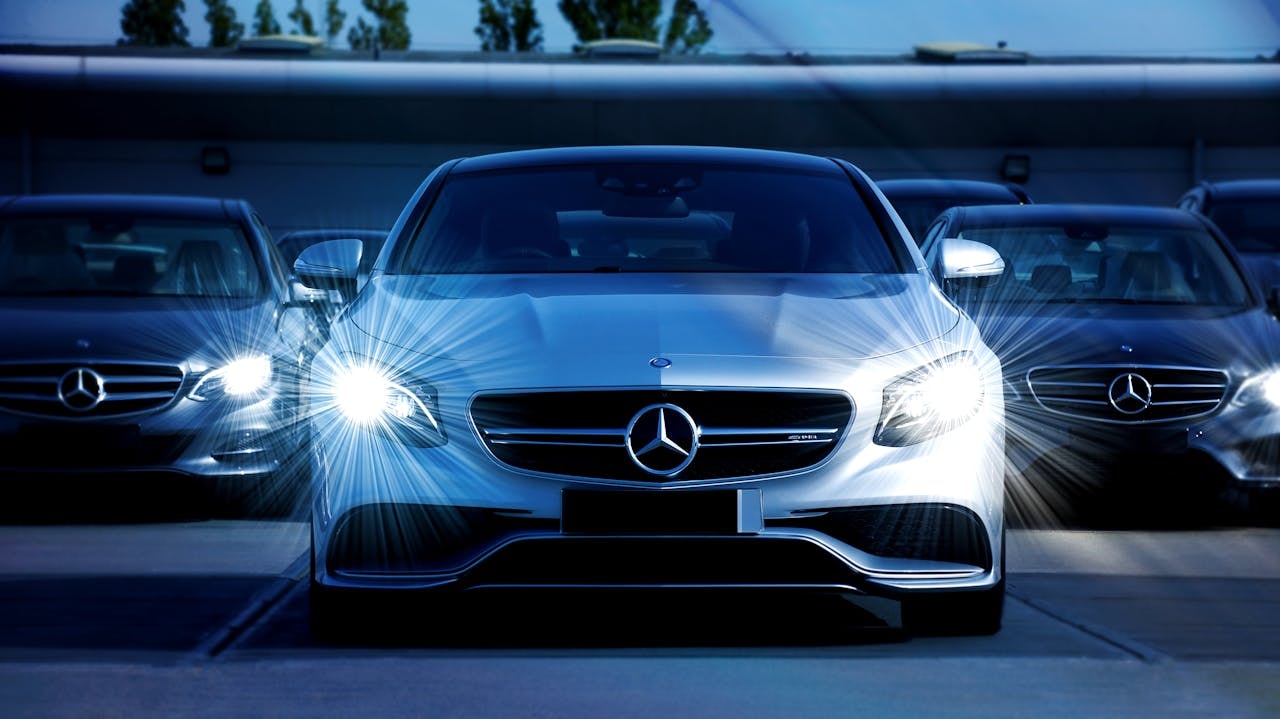Lumens tell you how bright your lights are. While Watts measure power usage, Lumens measure the actual light hitting the road. Simply put: the higher the lumens, the more light you have to cut through darkness or bad weather.
More brightness means more safety. Better light helps you spot obstacles and pedestrians earlier, giving you more time to react. This is why most drivers want the highest lumen count they can get—but there is a limit to how bright you should go.
The range is wider than you think. Different types of headlights can range from a dim 500 lumens to over 5,000. This guide will help you find the “sweet spot” so you can upgrade your car’s vision without breaking the law.
Measuring Headlight Brightness

Lumens tell the real story
Forget about Watts. Watts only measure how much power a bulb consumes, but Lumens measure the actual light you see on the road. When you shop for headlights, the lumen count is the only number that tells you how much visibility you are truly getting.
Focus is more important than power
Brightness is useless if it hits the trees instead of the pavement. A great headlight isn’t just about high numbers; it depends on a focused beam pattern that puts light exactly where you need it. Without this focus, you are just creating a dangerous glare for other drivers.
The 3,000 Lumen “Sweet Spot”
In the U.S., most experts suggest at least 3,000 lumens for safe night vision. The goal is to find a bulb that offers high brightness with a sharp cutoff line. This gives you maximum visibility without causing glare, keeping the road safe for you and everyone else.
Types of Car Headlights

Halogen headlights: typical brightness and limitations
Halogen headlights operate using a tungsten filament within a quartz glass bulb filled with halogen gas. When powered on, the filament heats up and produces a warm light.
On average, halogen bulbs emit about 1,000 lumens, significantly lower than LED headlights. About 80% of all vehicles still use these lamps.
Key Points:
- Halogen headlights use more power than LEDs. Slightly increases fuel consumption.
- Halogen bulbs have a shorter lifespan of up to 1,000 hours.
- Misadjusted halogen lamp assemblies can blind oncoming drivers.
- Operating at low temperatures can prevent snow from melting off the housing, reducing brightness.
HID headlights: advantages and disadvantages

HID (High-Intensity Discharge) headlights use an electric arc between tungsten electrodes within a bulb filled with xenon gas and metal salts. When powered on, the arc vaporizes the metal salts, producing an intense white or bluish light.
On average, HID bulbs can produce up to 5,000 lumens with a 55-watt bulb, significantly higher than halogen headlights.
Key Points:
- HID headlights are more energy-efficient than halogens.
- HID bulbs have a longer lifespan, typically up to 2,000 hours.
- Misadjusted HID headlamp assemblies can cause severe glare to oncoming drivers.
- HIDs require a brief warm-up period to reach full brightness.
- These headlights generate significant heat, which can be more noticeable to oncoming traffic.
- HID headlights offer color options ranging from golden to blue tones.
LED headlights: benefits and high light emitted

LED headlight bulbs use semiconductor technology to produce light. Like household LED bulbs, they produce a bright and efficient illumination source. They can emit up to 12,000 lumens per pair, significantly more than halogen or HID headlights.
Due to their low power consumption, LED lights are easier to install and provide improved fuel efficiency.
Key Points:
- Brighter light. LED lights produce 3,600-4,500 lumens with less wattage than HID lights.
- They do not waste energy as heat, like a household LED bulb.
- They offer enhanced brightness and efficiency compared to other types.
- LED lights can cause glare with a higher wattage bulb.
What Is the Legal Lumen Limit for Headlights?

If you are looking for a specific “legal number” for lumens, the short answer is that it does not exist.
Most people find this confusing because they assume the law only measures brightness. In reality, traffic laws care more about how your light behaves on the road than the total amount of light produced.
Why is there no single limit
Laws generally focus on beam pattern, glare, and aim. It is not just about the raw power of the bulb; it is about where that light goes.
- The Safe Range: In most areas, 2,000 to 4,000 lumens per bulb is considered the standard for safety. This range provides enough light for the driver without blinding others.
- The Glare Factor: Even a low-brightness bulb is illegal if it is aimed incorrectly. If your lights shine into the eyes of other drivers, you are breaking the law.
- High Beam Rules: High beams can be much brighter, but they must be turned off as soon as you see another vehicle.
Many drivers ask:
- How many lumens are legal for my car?
- Is there a limit to how bright I can go?
- Are LED upgrades legal?

The Basic Rule for Headlights
Bad Beam equals Illegal: If your light scatters everywhere and causes glare, it is illegal, even if the brightness is low.
Good Beam equals Legal: If your light has a sharp focus and stays on the road, it is usually legal, even if the brightness is high.
The Bottom Line: Instead of searching for the highest lumens, look for bulbs that offer a focused and controlled beam pattern.
What Are the Brightest Headlights You Can Actually Use?
1. Brightness is nothing without control
It’s a common mistake to think that more lumens always means a better light. In reality, the brightest legal headlights usually sit between 3,000 and 4,000 lumens. The law doesn’t just look at how bright the bulb is, but how well it mimics a standard halogen bulb to keep the light focused on the road.

2. Don’t fall for the “20,000 Lumens” trap
You’ve probably seen bulbs on Amazon claiming 10,000 or 20,000 lumens, but the truth is those numbers are just marketing fiction.
If a bulb actually produced 20,000 real lumens, it would be dangerous, illegal, and likely melt your headlight housing. Most of those “super-bright” bulbs actually measure closer to 3,000 real lumens when tested.
3. The secret to being bright and legal
The brightest headlight you can legally run isn’t the one with the biggest number on the box; it’s the one with the best engineering. To stay road-legal, a bulb must have a sharp cutoff line that doesn’t scatter light into the sky or the eyes of oncoming drivers.
4. How to spot a fake claim
Whenever you see a bulb claiming massive brightness for a low price, remember that physics usually beats marketing. If the lumens sound too good to be true, they probably are. Focus on finding a bulb that puts the light exactly where you need it—on the pavement.
Headlight Technology and Safety

Understanding Power Limits
The law usually limits light intensity to between 20,000 and 75,000 candela. This range is designed to keep lights powerful but safe for everyone on the road. The US is finally updating its old rules to match these modern global standards.
The Danger of Glare
More light doesn’t always mean better vision. If your bulbs are too bright, the light reflects off rain and signs, which actually makes it harder for you to see. It’s about clarity, not just raw power.
The Safety “Sweet Spot”
For the best balance of safety and visibility, aim for 2,500 to 3,000 lumens. This provides plenty of light to see hazards clearly without blinding oncoming drivers or breaking the law.
How Many Lumens Are Car Headlights? (Quick Comparison)
Brighter headlights can improve visibility and enhance road safety. However, it’s essential to balance this brightness to avoid causing glare for other drivers. If you prefer brighter lights, ensure the total light output stays below 3,500 lumens.
| Headlight Type | Low Beam Lumens | High Beam Lumens | Legal for Road Use? |
|---|---|---|---|
| Halogen Headlights | 700–1,200 lm | 1,200–1,500 lm | ✅ Yes |
| HID (Xenon) | 3,200–3,500 lm | 3,500–4,000 lm | ✅ With projectors |
| LED Headlights | 2,000–4,000 lm | 3,000–6,000 lm | ⚠️ Depends on beam |
| Aftermarket “10,000+ lm” LEDs | Claimed only | Not real output | ❌ Usually illegal |
| 20,000 Lumen Headlights | ❌ Not realistic | ❌ Not street-legal | ❌ No |
Excessive brightness can cause discomfort and impair the vision of oncoming traffic. Therefore, achieving optimal performance involves ensuring that headlights are correctly adjusted and that the beam pattern is well-designed to focus light on the road and illuminate surroundings evenly.
Recommended brightness for different driving conditions
Low-Beam Headlights: For standard driving conditions, including city streets and well-lit roads, a lumen range of 1,500 to 2,000 lumens is generally sufficient. This provides adequate illumination without excessive glare.
High-Beam Headlights: High-beam headlights with a lumen range of 2,500 to 3,500 lumens are recommended for driving on poorly lit roads or highways. This brightness level provides enough visibility and allows for a longer sight distance.
Fog Lights: For foggy or misty conditions, fog lights typically provide between 1,000 and 1,500 lumens. These lights are designed to cut through the fog and reduce glare by emitting a wide, low beam.
Off-Road Lights: Additional auxiliary lights can produce 3,000 to 5,000 lumens or more when off-roading.

LED Headlights in Depth
1. Why Switch to LED?
LEDs are popular because they last longer and offer a clean, white light that makes night driving much easier. They improve your vision while reducing eye strain and glare, as long as they are high-quality bulbs.
2. The Truth About Heat
Even though the light beam stays cool, the bulb itself generates internal heat that can shorten its life. To keep them running at peak performance, always choose LEDs with a built-in cooling system, like a fan or a heat sink.
3. Finding the Right Fit
Not every LED fits every car. You need to check your owner’s manual or use an online tool to verify the bulb size and electrical compatibility before buying. Also, make sure your car’s housing has enough space for the new bulb and its cooling fan.
4. Installation: DIY or Pro?
Many LED kits are “plug and play,” but some require more work to fit correctly. If you aren’t comfortable with car electronics, hiring a professional installer ensures your lights are aimed correctly and perform at their best.

Conclusion
LED headlights offer improved fuel efficiency, brightness, and customization options. Understanding lumens helps select the proper brightness, while a well-designed main beam pattern ensures effective and safe light distribution on the road.
It would be best to tweak the illumination, glare, and color temperature for the perfect usable light. Technical considerations like power consumption and heat management may further affect your headlight.
Final thoughts on choosing the right headlight for your vehicle
Choose headlights that fit your installation needs and preferences. Consider brightness, color temperature, and beam pattern when choosing headlights. Additionally, assess compatibility with your vehicle’s electrical system and headlight housing.
Refer to your local regulations for the maximum and minimum lumen count. Remember, your car’s headlights are your eyes on the road at night. So they do not compromise on their quality or performance.
Upgrade Your Fleet’s Headlights Today!
For more detailed guidance on selecting the best headlights for your vehicle, visit us anytime!
Explore our comprehensive resources, diverse models, and expert recommendations to make an informed decision. Come chat with us, and let us know your ideas!
FAQ
Q1: Are 20,000-lumen headlights legal?
Honestly? No. Those “20,000-lumen” bulbs you see online are almost always pure marketing hype. If a bulb were actually that bright, it would be dangerous and illegal. Real-world, high-performance bulbs that are actually safe for the road usually stay under 4,000 lumens.
Q2: What is the actual legal limit for lumens?
There isn’t one specific “magic number” that catches a lot of people off guard. The police and the law care more about whether you are blinding other drivers. You can have a very bright bulb that is perfectly legal as long as it has a sharp, focused beam pattern that stays on the road.
Q3: How many lumens are standard car headlights?
It depends on what you’ve got under the hood. Old-school halogen bulbs usually put out about 700 to 1,200 lumens. If you upgrade to LEDs, you’re looking at a jump to 2,000–4,000 lumens. High beams can go higher, but you should only use that extra power when the road is empty.




